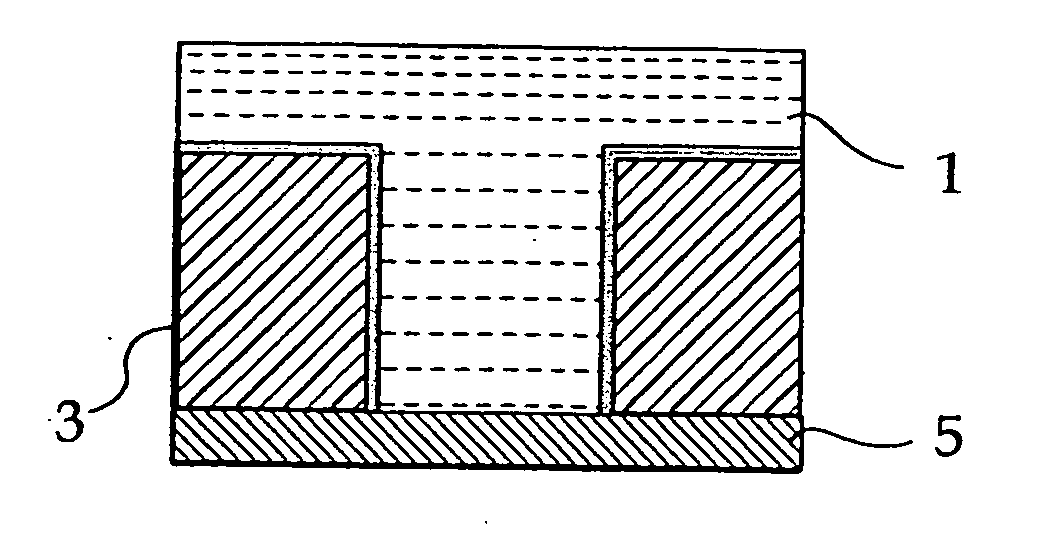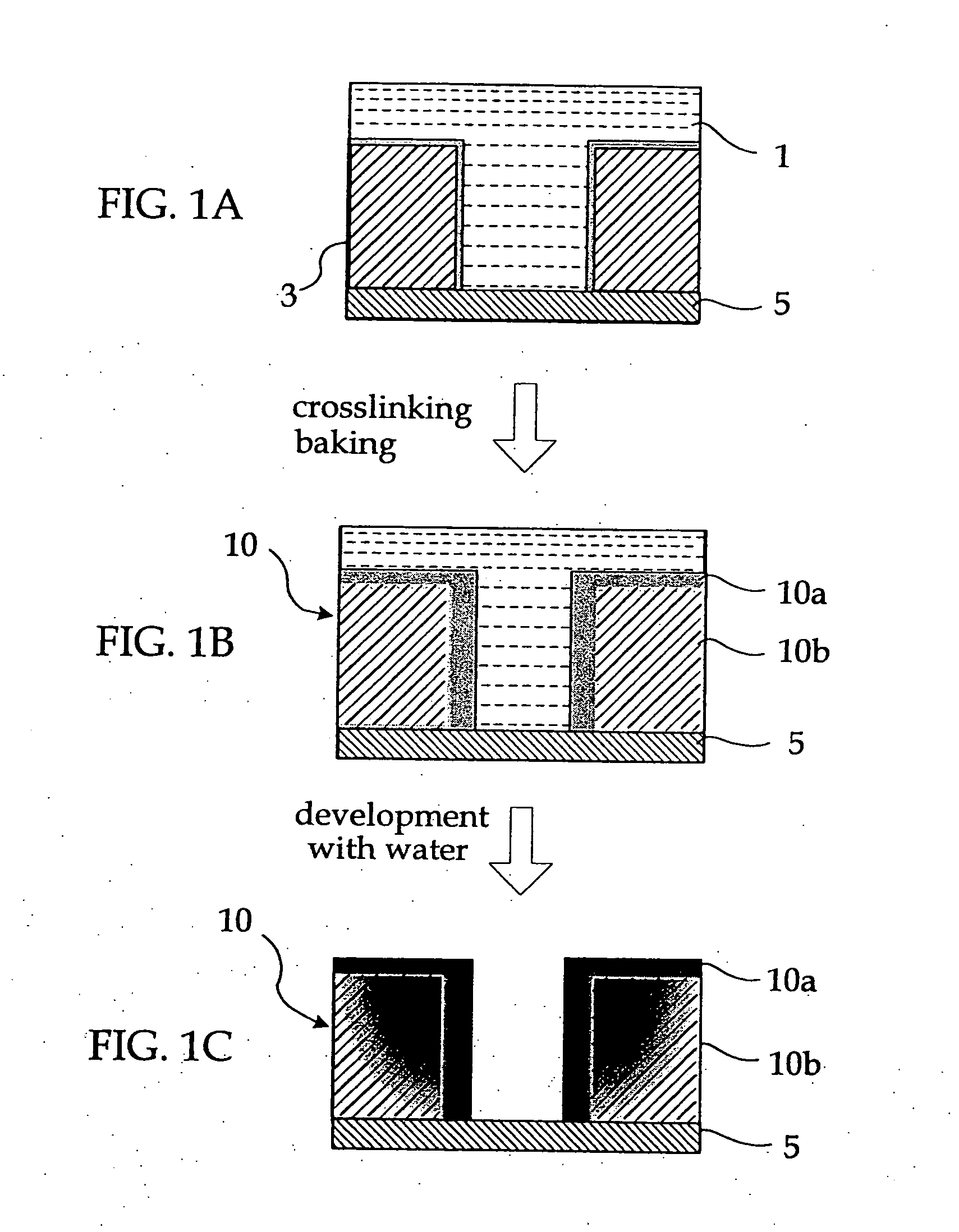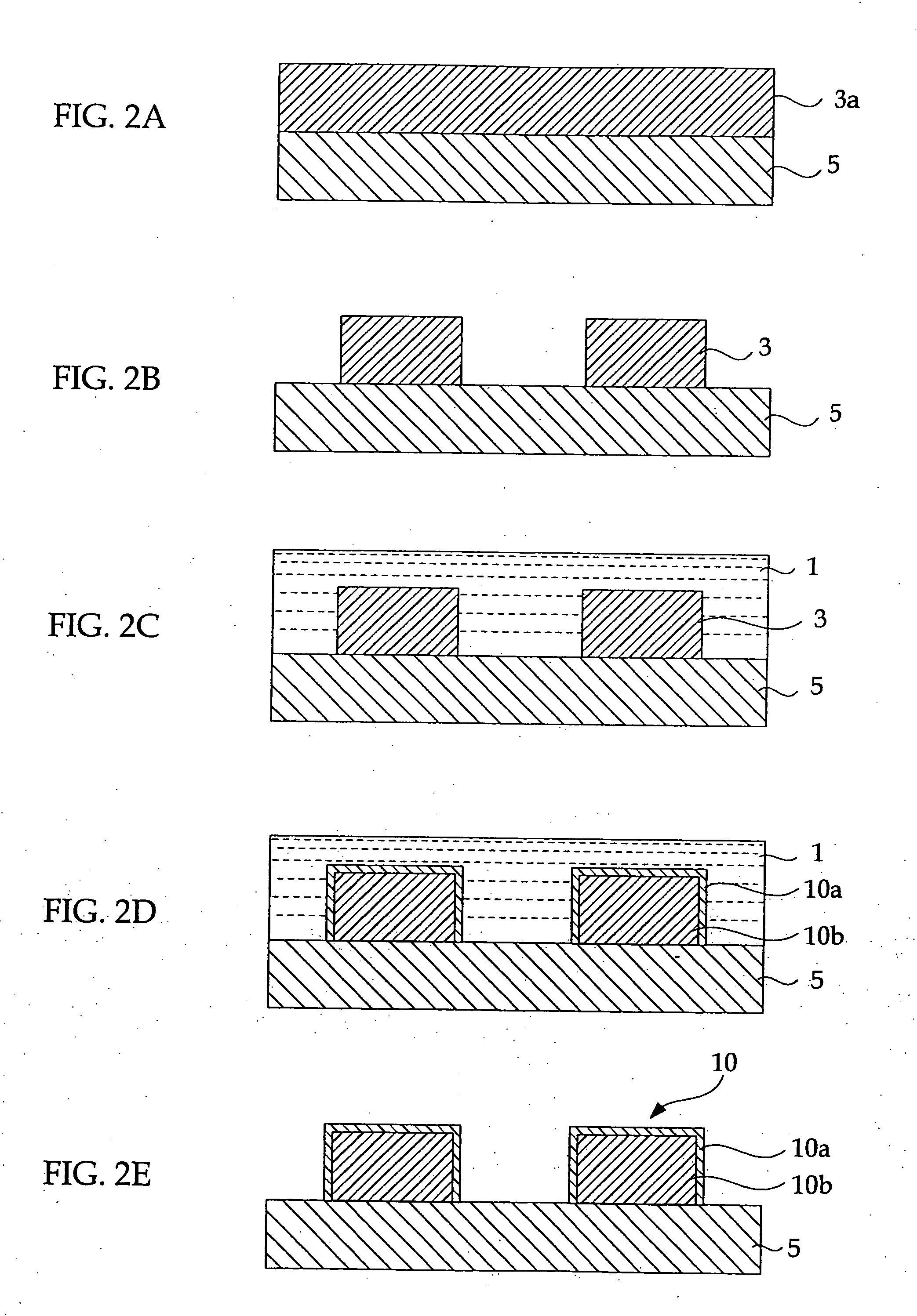Resist pattern thickening material, resist pattern and process for forming the same, and semiconductor device and process for manufacturing the same
a technology of resist pattern and thickening material, which is applied in the direction of photosensitive materials, auxiliary/base layers of photosensitive materials, instruments, etc., can solve the problems of inability to efficiently thicken resist pattern, inability to use arf excimer laser as exposure light, etc., and achieve efficient thickening of resist pattern
- Summary
- Abstract
- Description
- Claims
- Application Information
AI Technical Summary
Benefits of technology
Problems solved by technology
Method used
Image
Examples
example 1
-Preparation of Resist Pattern Thickening Material-
[0143] Resist pattern thickening materials A through O of the present invention having the compositions shown in Table 1 were prepared. Note that, in Table 1, the unit of the values in parentheses is parts by mass. In the “resin” column, “KW-3” is a polyvinyl acetal resin (manufactured by Sekisui Chemical Co., Ltd.). In the “crosslinking agent” column, “uril” is tetramethoxymethylglycol uril, and “urea” is N,N′-dimethoxymethyldimethoxyethylene urea. In the “surfactant” column, “SO-135” is a non-ionic surfactant (a secondary alcohol ethoxylate surfactant manufactured by Asahi Denka Co., Ltd.), “NP-675” is a non-ionic surfactant (a nonylphenol ethoxylate surfactant manufactured by Asahi Denka Co., Ltd.), “SP-12” is a non-ionic surfactant (a special phenol ethoxylate surfactant manufactured by Asahi Denka Co., Ltd.), “T-81” is a non-ionic surfactant (a sorbitan ester surfactant manufactured by Asahi Denka Co., Ltd.), “LB-53B” is a no...
example 2
-Flash Memory and Process for Manufacturing the Same-
[0155] Example 2 is an example of the semiconductor device and a process for manufacturing the same of the present invention using the resist pattern thickening material of the present invention. Note that, in Example 2, resist films (resist patterns) 26, 27, 29, 32, and 34 which will be described hereinafter are resist films which have been thickened by the same method as in Examples 1 by using the resist pattern thickening material of the present invention.
[0156]FIGS. 3A and 3B are top views (plan views) of a FLASH EPROM which is called a FLOTOX type or an ETOX type. Note that FIGS. 4A through 4C, FIGS. 5 D through 5F, and FIGS. 6G through 6I are cross-sectional schematic views for explaining an example of a process for manufacturing the FLASH EPROM. In FIGS. 4A through 6I, the illustrations at the left sides are the memory cell portion (a first element region), and are schematic diagrams of the cross-section (the A direction...
example 3
-Manufacturing of Recording Head-
[0180] Example 3 relates to the manufacturing of a recording head as an applied example of the resist pattern of the present invention using the resist pattern thickening material of the present invention. Note that, in Example 3, resist patterns 102 and 126 which will be described hereinafter are resist patterns which have been thickened by the same method as in Example 1 by using the resist pattern thickening material of the present invention.
[0181]FIGS. 9A through 9D are process diagrams for explaining the manufacturing of the recording head.
[0182] First, as shown in FIG. 9A, a resist film was formed to a thickness of 6 μm on an interlayer insulating film 100. Exposure and developing were carried out, so as to form the resist pattern 102 having an opening pattern for formation of a spiral, thin film magnetic coil.
[0183] Next, as shown in FIG. 9B, a plating underlying layer 106 was formed by vapor deposition on the interlayer insulating layer ...
PUM
| Property | Measurement | Unit |
|---|---|---|
| wavelength | aaaaa | aaaaa |
| wavelength | aaaaa | aaaaa |
| boiling point | aaaaa | aaaaa |
Abstract
Description
Claims
Application Information
 Login to View More
Login to View More - R&D
- Intellectual Property
- Life Sciences
- Materials
- Tech Scout
- Unparalleled Data Quality
- Higher Quality Content
- 60% Fewer Hallucinations
Browse by: Latest US Patents, China's latest patents, Technical Efficacy Thesaurus, Application Domain, Technology Topic, Popular Technical Reports.
© 2025 PatSnap. All rights reserved.Legal|Privacy policy|Modern Slavery Act Transparency Statement|Sitemap|About US| Contact US: help@patsnap.com



